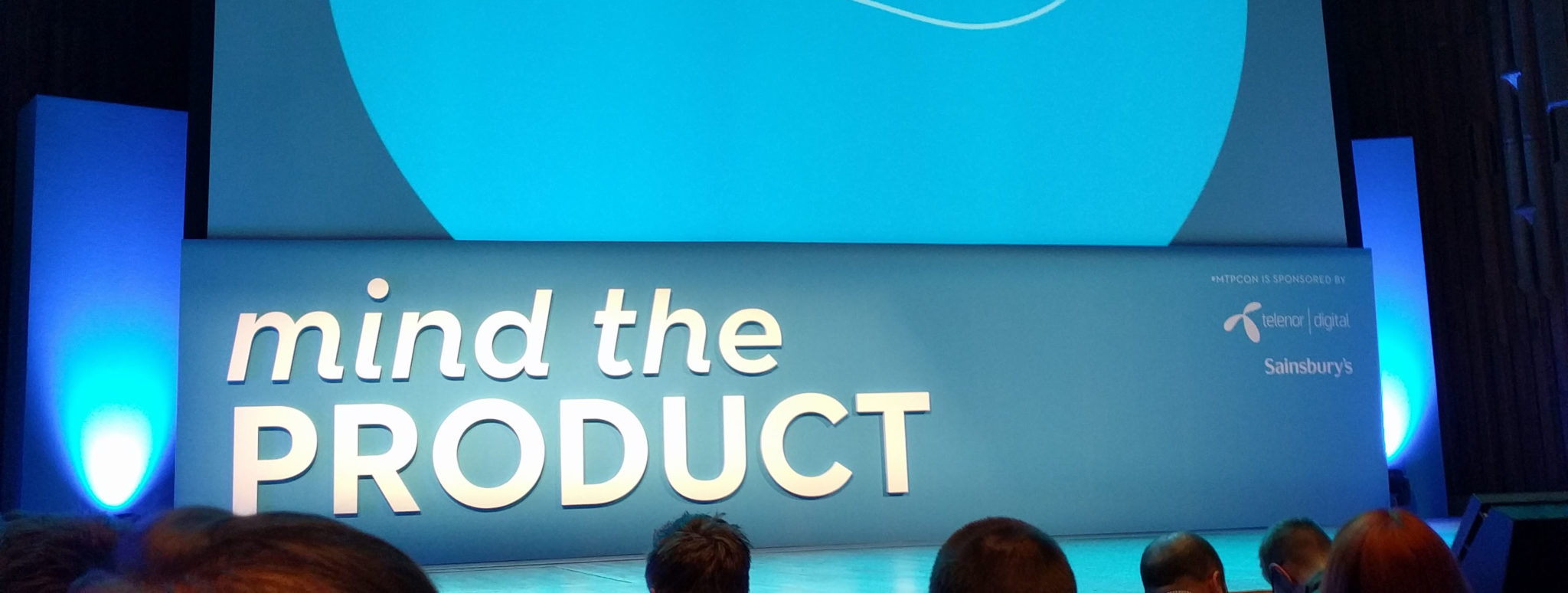Understanding the role of a Product Manager is more important than ever with the increasing pressure on businesses to not just deliver products, but to please their users with innovative products. Mind the Product Conference (MTPC) has matured from a small meet-up called Product Tank into a worldwide conference for passionate product managers. Last Friday, over 1400 people gathered in London to listen to presentations about building innovative products and the people that create them.
This conference offered real, practical advice that Product Managers and Designers can use throughout their careers. The MTPC 2016 speakers have a lot of real-life experience, which they brazenly passed onto the audience. While the conference delivered a lot of practical advice from many different speakers, these are a few key takeaways:
Marty Cagan
Marty Cagan is the founder of Silicon Valley Product Group, where he works with and advises many of the leading technology teams and was the SVP of Product and Design for eBay. Cagan started off the conference with a presentation outlining the confusion that surrounds the role of a product manager. He provided the audience with 6 examples of self-effacing role models from different companies. The product managers he mentioned were Martina Lauchengko; Microsoft Word, Kate Arndold; Netflix, Jane Manning; Google AdWords, Alex Pressland; BBC, Camille Hearst; Apple iTunes, and Lea Hickman; Adobe CC.
Cagan explained the different jobs these Product Managers had done at their various companies and gave many examples of their day-to-day struggles. What was it that made these brands so successful? With every one of these successful companies, it was an outstanding Product Manager that worked tirelessly behind the scenes. They deeply understood all aspects of the business, whether marketing, sales, finance, and so on. These Product Managers achieved success by solving real problems for customers while meeting business needs.
“Product management is distinct from other disciplines,” Cagan said. “No one is the boss, but the good CEO knows they need teams of missionaries, not mercenaries. Great product managers are true leaders, they are smart, creative and persistent, they lead through inspiration, motivation, and logic, and they’re not afraid to lead.” What these Product Managers did for the company was imperative for product success, however, they remain hidden behind the scenes. These 6 role models embody the Product Manifesto: to deflect praise and accept the blame.
Cagan closed his presentation by explaining that everyone tries to define the role of a Product Manager by confusing it with other roles such as a business analyst. We need to stop having this “ridiculous conversation about the role, and about product versus project management”, he said, because it misses the entire point of the job.
Source: Mind the Product
Simon Cross
Another outstanding speaker was Simon Cross, a Product Manager at Facebook London. He’s currently focused on Facebook at Work with the goal of improving how people communicate and collaborate in the workplace. He worked in Silicon Valley for a few years where he was the lead Product Manager for Facebook’s products such as the Like Button.
One of the key takeaways from Cross’s presentation was that when you’re trying to build a great product, you have to watch what users are doing and build a feature around those behaviors. You don’t necessarily have to conduct a lot of research because your users are already showing you what needs to be built – you just need to watch closely and understand their pain points.
Cross points out that Product Managers are influencers above all else. He outlines how Facebook has built some of its most successful, innovative products, such as the photo tagging and Messenger feature and asked the audience to think of what their most successful product is during their career. He goes on to explain the importance of paying attention to the “Cow’s Path”. When there is a beautiful, windy cobble path on a farmer’s field and the cows are making their own pathway straight through the grass, recognize their behavior and adjust to the path they’re using. Product Managers should be on a pursuit to understand their users and doing what they can to please them. Don’t change the behavior of the user, but instead, adapt to it.
Cross provided numerous examples from Facebook’s products and how it has evolved over the years by continuously examining user behaviors. “Understand. Identify. Execute”, Cross reiterated. It’s not necessarily about coming up with an entirely new product but enhancing what is already there to solve users’ pain points.
A minimum viable product (MVP) allows you to get a version of your product to market early to test your products’ core set of features. By offering the core set of features rather than a full-blown, feature-heavy product, you can test key hypotheses and gather user information, intelligence, and patterns of behavior. At Clearbridge, we understand that the best way to improve a mobile app is by observing how people are actually using your product and what features would benefit them. This is how we “understand, identify, and execute.”
David Cancel
Drift founder and CEO, David Cancel continued the idea of listening to customers and users as he provided examples of the destructive consequences of what can happen when they fail to do this. “It’s hard to listen to customers, but today there is no excuse not to be listening,” he said. Cancel introduced a framework to help Product Managers analyze customer feedback:
- UX issues. These are questions the user has relating to the user experience: “How do I? What happens when? I tried to?”
- Product marketing issues. When the user has questions such as “Can you? How do you compare to? Why should I use you?”, it’s a product marketing issue.
- Positioning issues. A key user statement around positioning includes: “I’m probably not your target customer.”
“Innovation is not just about sweeping changes,” Cancel said. “People value small updates and fixes and that they were involved in that journey,” just as much as big disruptive changes. Innovation is not just about doing something completely new but doing something different and getting better results. Product Managers should understand this and solve problems in a different way. Cancel wrapped up his presentation by explaining how we acknowledge pain points and velocity but rarely talk about the customers or users themselves.
Jeff Veen
The final presentation was from Jeff Veen, a Design Partner at True Ventures. Veen works as an advisor for About.me, Medium, and WordPress. Veen spoke about the leadership role in product management referencing back to a time in his life where he solved an issue by implementing structure within his team.
Something will break at some point so you need to create a culture of team to fix the problem efficiently. Veen told the audience to look at the problem in a different way in order to create a culture of togetherness. How you do accomplish this? By dividing the team into two parts to deal with the customer experience (CX) and the user experience (UX). The leader (Product Manager) deals with “noise” and other members of the team (developers, designers, etc.) deal with fixing the problem. Veen solved a huge problem in his company’s equanimity (grace under pressure) by trusting the team to fix the catastrophic issue. The developers should be focusing solely on fixing the issue, not what the customers and stakeholders are saying about it. The team knows how it should be fixed and the leader must give them space and deal with customers and other stakeholders. Use structure and process to manage the anxiety the team feels under pressure. This is key for the team to remain levelheaded with a clear perspective to resolve the issues in the quickest amount of time. A clear mind and focus will help ensure product success.
“Everything is user experience, not just the interface, and I’ve learned that teams thrive with equanimity,” Veen said during his presentation. Product management is not about delivering a product that works because something will inevitably go wrong. As a Product Manager, you need to find a way to create a culture within your team that is creative, supportive, and undistracted.
Product people from around the world have the opportunity to come and meet with each other to move the discipline forward. The first conference was held in 2012 and has sold out for 5 consecutive product management conferences in London and San Francisco with more speakers every year. This conference allows Product Managers to reflect on product strategies, practices, and processes that are outside of their everyday roles.
These insightful product leaders covered many topics ranging from understanding users to building teams that can work efficiently, but the most important takeaway was about ownership and responsibility as a product leader. Taking ownership, whether it’s a process or problem, is a core concept rooted in the Product Manifesto that will ensure success as a Product Manager.








